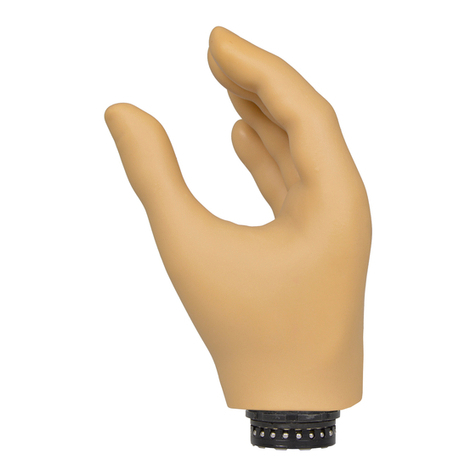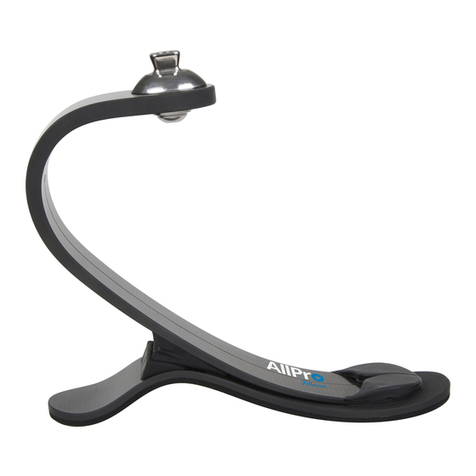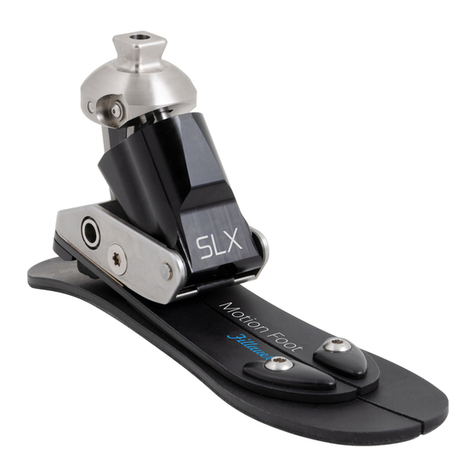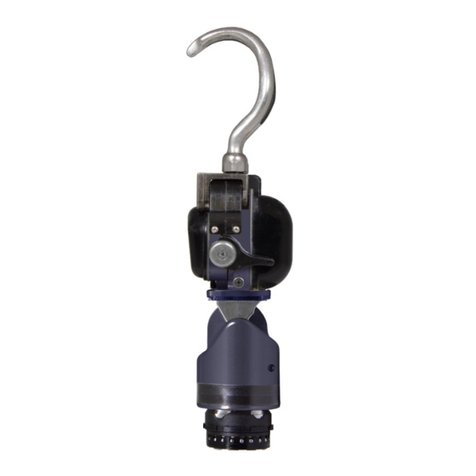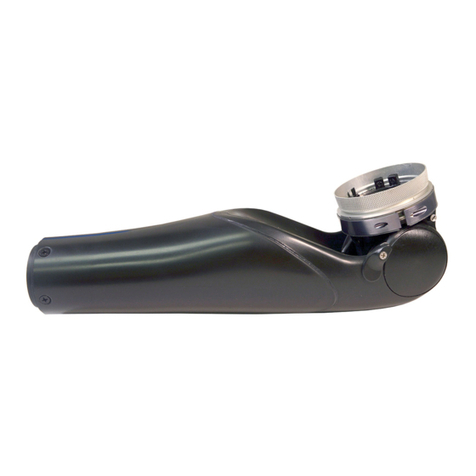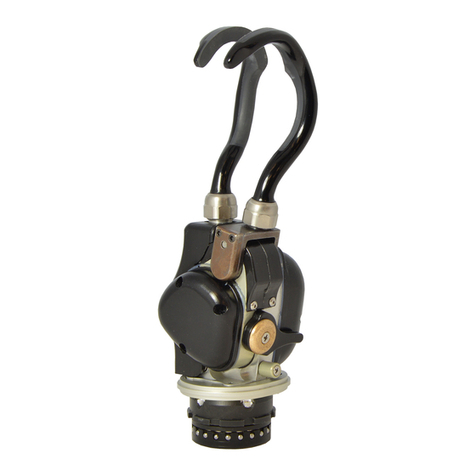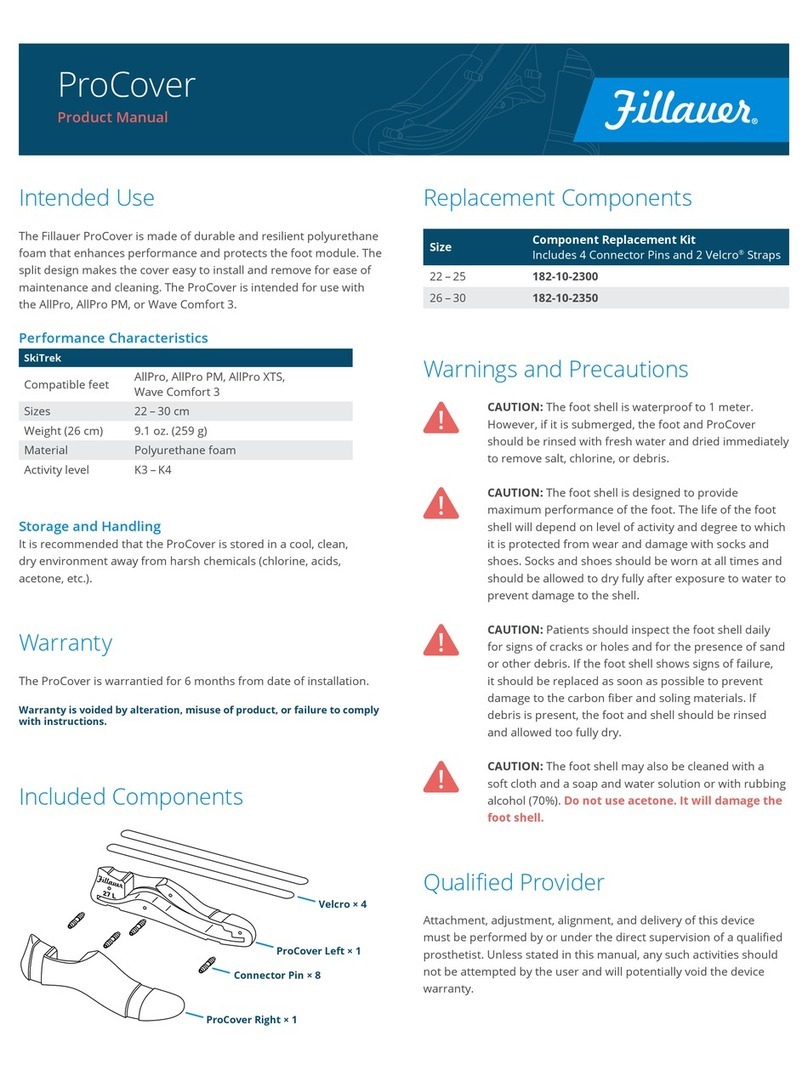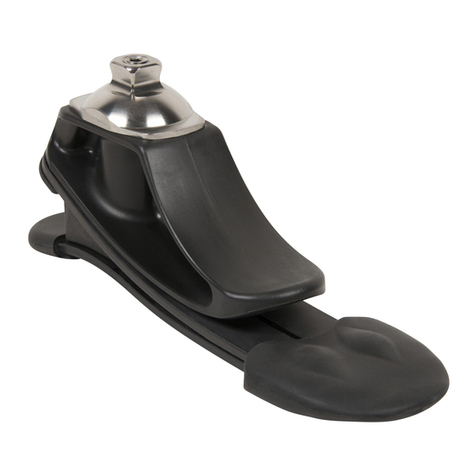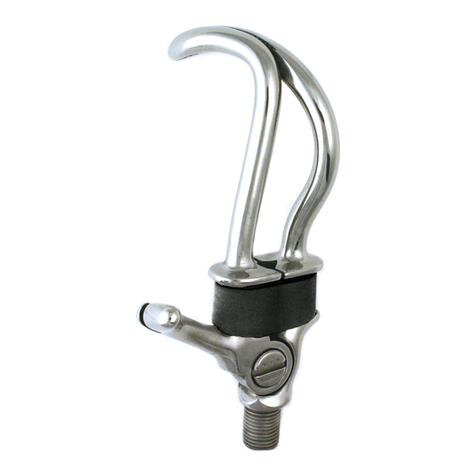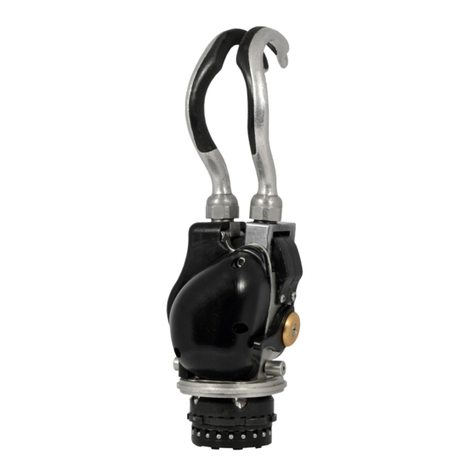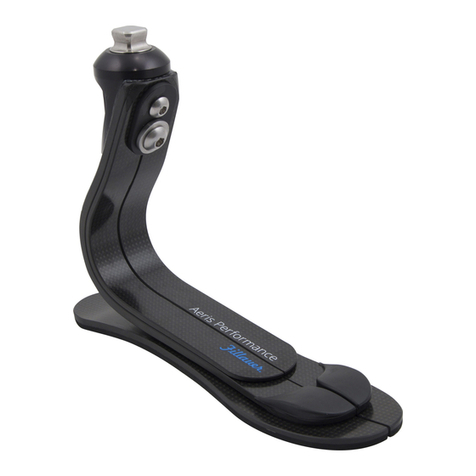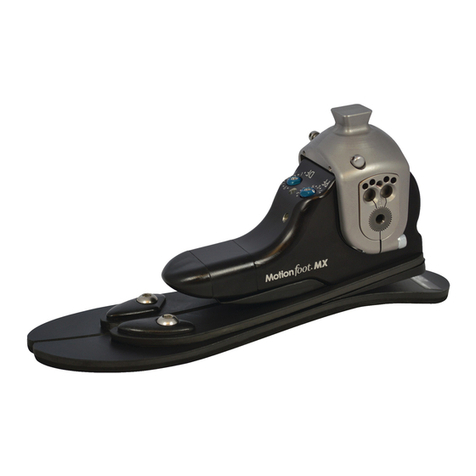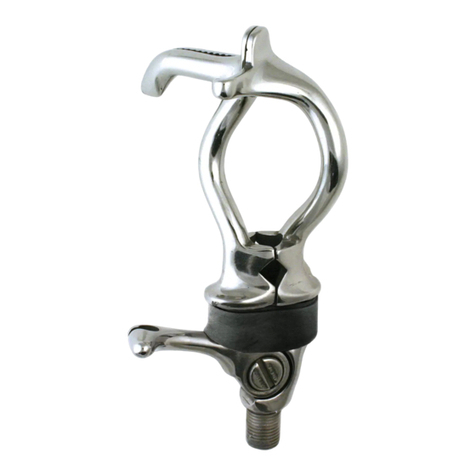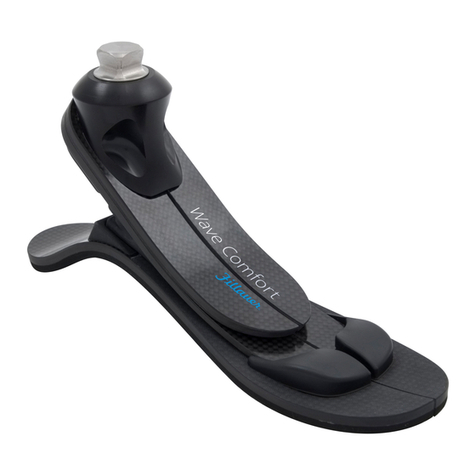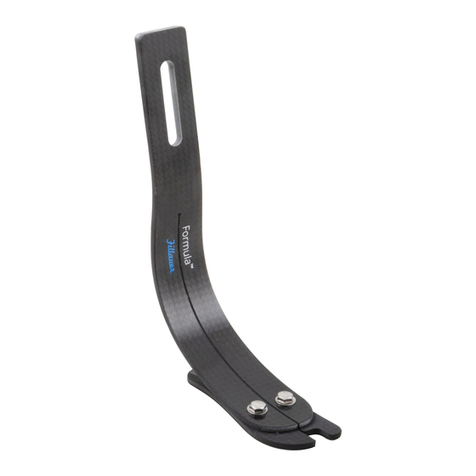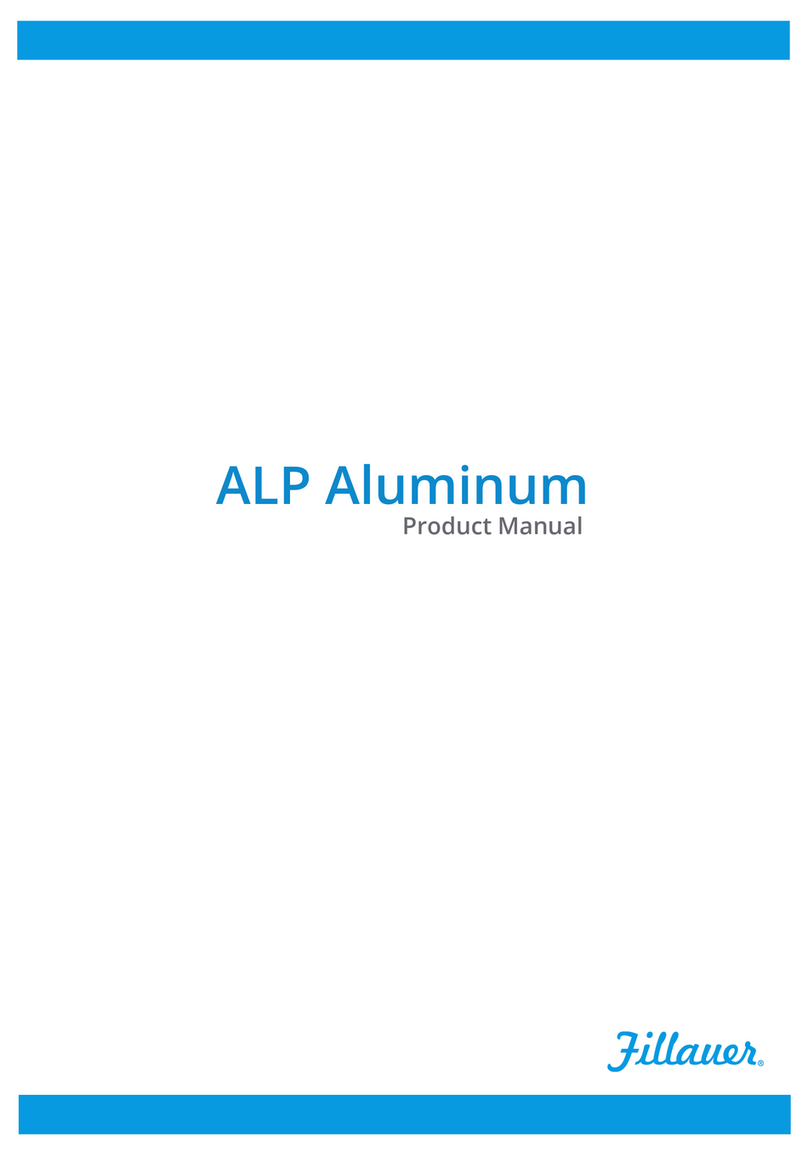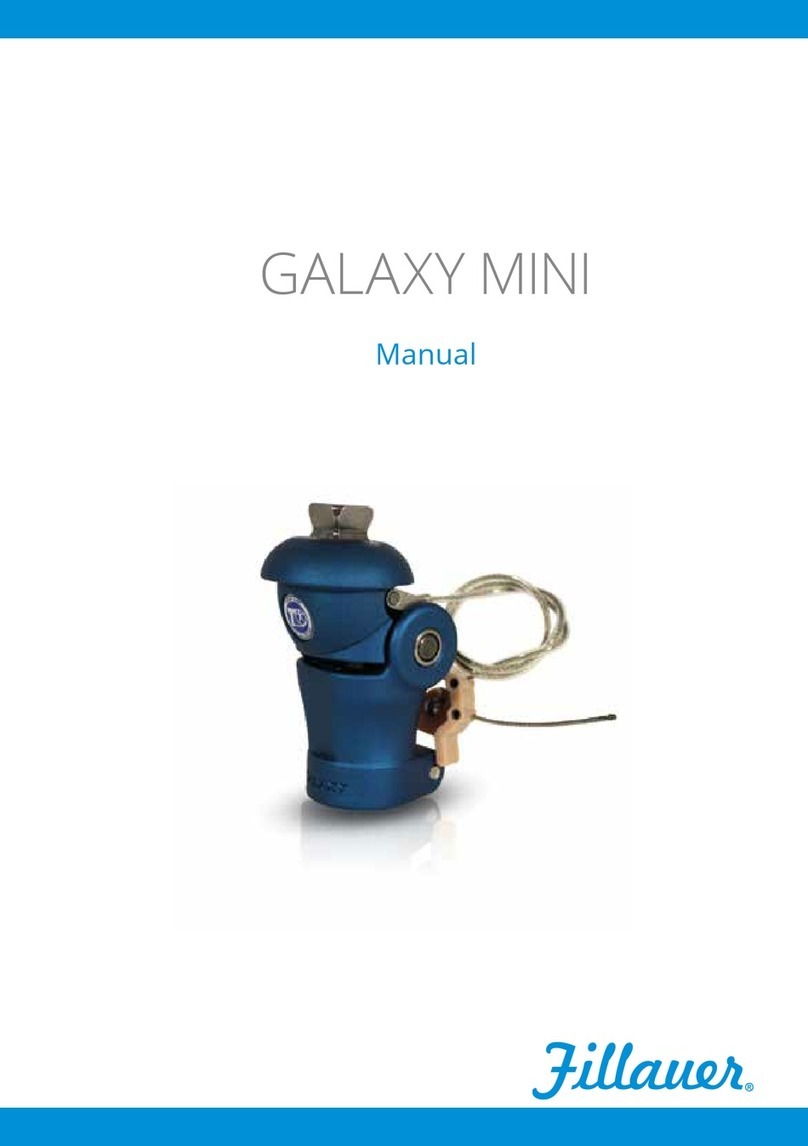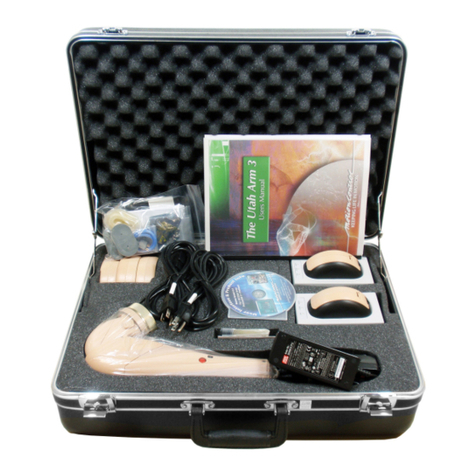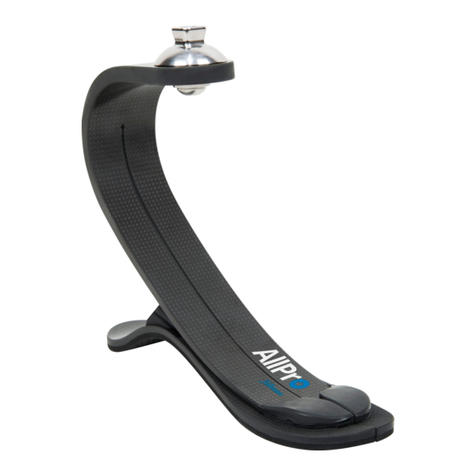
Installation
Be cautious when disassembling the locking joint. Always
disassemble in a clean area and over a tray that can catch
any small pieces that may fall out. Always disassemble
slowly with the joint straps on top so that the internal
parts do not fall out. Tape a small piece of clear plastic
or other small at surface over the internal pieces to
keep the assembly together while disassembled. A piece
of clear plastic assists installation by making the parts
visible to allow a check of function before reinstalling.
If the joint no longer functions after installation, ensure
that the pieces have been reinstalled as shown in
Figure1.
Figure1
Cable Housing
The cable housing length can be adjusted by removing
the set screw on the side of the joint housing and
trimming to the proper length. Reinstall the set screw
with a small amount of threadlocker on the threads of
the set screw only. Be sure to route the cable directly into
the lock housing using cable housing anchor(s). Minimize
turns in the cable housing to prevent excess friction on
the lock cable which may result in poor function.
Disposal/ Waste Handling
The product must be disposed of in accordance with
applicable local laws and regulations. If the product has
been exposed to bacteria or other infectious agents,
it must be disposed of in accordance with applicable
laws and regulations for the handling of contaminated
material.
All metal components may be removed and recycled at
the appropriate recycling facility.
User Instructions
The providing health care professional must review the
following information directly with the user.
Care and Maintenance
NOTICE: The user should monitor their prosthesis
daily and contact their health care professional if
they experience changes in device performance or
if it begins to make noise.
CAUTION: The joint should not be disassembled
or lubricated by the user. All maintenance
should be performed by a qualied health care
professional.
CAUTION: Abnormal or improper environmental
conditions will lead to malfunctioning and damage
of this device and are not covered under the
warranty. This prosthetic component must not
be subjected to dust/debris, harsh chemicals,
liquids, abrasives, vibration, activities which would
damage the biological limb, or prolonged extreme
temperatures (<-5°C or >50°C). If the joint is
exposed to any dust, debris, or liquids, it should
be promptly rinsed with fresh water and dried to
prevent corrosion.
NOTICE: An upper-limb prosthetic device user’s
ability to drive should be determined on a case-
by-case basis by a specialist. Contact your local
governing authorities regarding any driving
restrictions or limitations.
CAUTION: Body-powered devices should not rely
on cable tension for grasp control if the user has
been cleared to drive with the prosthesis.
Fillauer LLC
2710 Amnicola Highway
Chattanooga, TN 37406
423.624.0946
Fillauer Europe
Kung Hans väg 2
192 68 Sollentuna, Sweden
+46 (0)8 505 332 00
© 2022 Fillauer LLC
M109/12-12-22/Rev.1
Serious incidents
In the unlikely event of a device failure resulting in injury,
seek immediate medical help and contact your prosthetist
at the earliest possible convenience. Clinicians should
contact their local Fillauer representative immediately in
the event of any device failure.
Warranty
This product has a 12 month warranty against
manufacturer defects.
To see other language options, visit
llauer.com.
